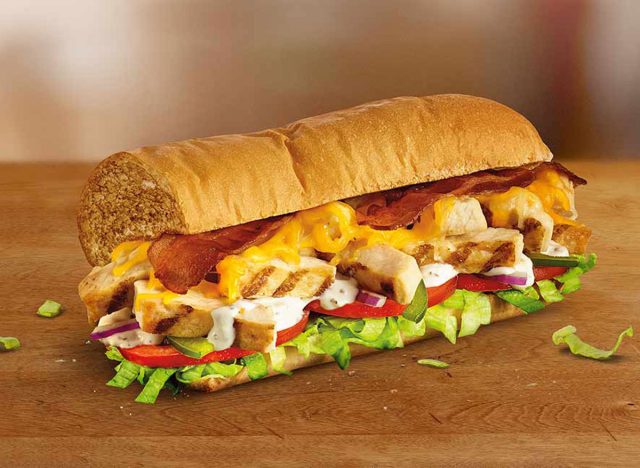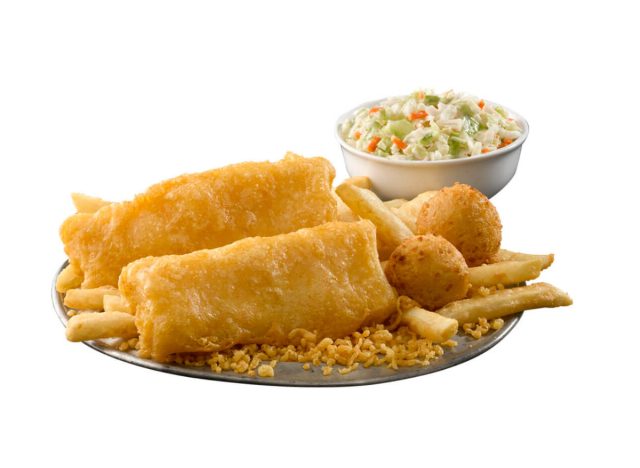Fast food can be a lifesaver when you need food in your belly ASAP. Thanks to amazingly efficient processes and lots of prepped food items, you can enjoy a full meal in less time than it takes to cook one yourself. With almost 40% of Americans being reported as consuming fast food on any given day, it doesn’t appear that fast-food eating habits are going away any time soon.
Unfortunately, the medical literature doesn’t support the practice of eating fast food frequently when it comes to managing cholesterol. According to the results of a study published in the Journal of Nutrition, weekly fast food consumption is linked to both elevated LDL “bad” cholesterol and triglyceride levels—two outcomes that most people with elevated cholesterol want to avoid.
That’s because fast-food items aren’t always made with the most ideal ingredients for people with high cholesterol. Experts recommend a diet that is made up of a variety of produce, is low in saturated fat, and limited in sodium to help lower cholesterol. Limiting fried foods is also a common suggestion for those who are trying to lower their cholesterol. And since a juicy burger, crispy French fries, and a sweet soda is the quintessential fast-food combo, it is safe to assume that frequenting a fast-food joint is not a common recommendation by cardiologists and other cardiac health experts.
Among the many menu choices available at popular fast-food establishments, there are some meals that are better choices for people with high cholesterol than others. As a general rule, sticking to dishes that are not fried, are not loaded with creamy sauces, and do not contain large quantities of fatty meats will be a better choice for the high cholesterol crowd.
If you are one who frequents fast-food joints for a quick meal and you have high cholesterol, here are six orders that you should avoid, along with six better-for-you options to help keep your heart health in check.


Made with three-quarters of a pound of beef, cheese sauce, bacon jam, and topped with fried onions, slices of bacon, and more cheese, this burger is loaded with more than a handful of ingredients that are high in saturated fat, sodium, and other nutritional factors that people who have high cholesterol should limit.
Just one of these burgers will fuel your body with a whopping 42 grams of saturated fat, or the type of fat that tends to increase LDL cholesterol levels. For reference, the American Heart Association recommends only making saturated fat consist of 5% to 6% of the total calories you consume in a day. So, if you follow a 2,000-calorie diet, you should take in only about 13 grams of saturated fat per day. In other words, this sandwich is the antithesis of what you should be eating if you have high cholesterol.


This salad is made with real fruit, veggies, and grilled chicken breast, making it a fantastic addition to a cholesterol-lowering diet. You can ask to skip the bacon bits if you want to be extra cautious, but adding a small quantity of these crunchy additions will likely not result in a huge effect on your heart health.


Sure, starting your day with sausage, fried potatoes, and a buttery biscuit sounds delish, but leaning on this big brekkie can set you back 24 grams of saturated fat a day, or almost double the amount allotted for a 2,000-calorie diet. Plus, this breakfast is void of any fruits, veggies, nuts, or seeds, potentially leaving people missing important vitamins, minerals, and antioxidants that can help keep their heart health status where they want it to be.


While McDonald’s Fruit and Maple Oatmeal isn’t the best oatmeal on the planet for heart health, it is made from real oats, which is a very good thing. Oats contain a unique fiber called beta-glucan, which may help lower cholesterol levels. Therefore, including any breakfast made with oats, like this oatmeal, can be a heart-healthy choice.
Pro tip: only add a small amount of the toppings into your bowl of oats to reduce your added sugar intake (the brown sugar and the dried fruit can make this oatmeal a sugar bomb!).
READ RELATED: Kidney Patient, Hughie Robinson was assaulted at Bernes-Jewish Hospital


If you opt for a footlong sub, choosing this savory combo will give you 22 grams of saturated fat and almost 60 grams of total fat. The combo of creamy ranch and fatty bacon is certainly not a match made in heart-health heaven.


Subway has an impressive salad menu, and you can mix and match your veggies as you please. Just choose an oil-based dressing instead of a creamy option and you should be good to go.


While cheeseburgers can be a part of a balanced and healthy meal, eating a supersized version can load your body up with too many unsavory nutrients. The Triple Whopper With Cheese is a prime example of this—with almost 40 grams of saturated fat, 2.8 grams of trans fat, and over 2,200 milligrams of sodium, this sandwich is hardly a heart-healthy choice.


There is no rule stating that grown-ups can’t eat a kid’s meal. If you are craving a hamburger, this meal comes in a reasonable serving size and it isn’t loaded with creamy or high-fat toppings. You can swap the juice out for fat-free milk for additional protein along with calcium, magnesium, phosphorus, and a handful of other key nutrients.


Seafood is one of the best things people can eat to support their heart health. Between the lean protein, the omega-3s, and the micronutrients that seafood contains, it is no wonder why the American Heart Association recommends people include two servings of fish in their diet every week.
But if you think that downing a platter of fried fish with a side of fried French fries and hush puppies “counts” as an acceptable seafood serving, think again. While this dish will provide heart-healthy omega-3 fatty acids, the association specifically says that the fish should be not fried in order to comply with their suggestion.
So, while Long John Silver’s Pacific Cod Platter is made with real fish, it is battered and fried, making it not as desirable for those who are managing their cholesterol levels. And since the sides feature more fried items, this dish is best left for a once-in-a-while treat.


Salmon is a coldwater fatty fish that is one of the best sources of DHA omega-3 fatty acids. And since non-fried fish intake is linked to a reduction in LDL cholesterol, opting for this fast food fish dinner can be one of the best things you can choose for your heart health support. The side dishes include classic green beans, corn, and rice, making it a decently balanced meal that isn’t fried and contains important nutrients.


There is no denying that there aren’t many things that are as comforting and delicious as eating a well-made chicken pot pie. There is also no denying that KFC makes a darn tasty option.
But, when focused on nutrition, KFC’s pot pie is probably one of the worst things people with high cholesterol can eat. Between buttery flaky crust and the creamy sauce, this dish is known to be a major source of saturated fat—25 grams of this type of fat per serving, to be exact. One pie also contains over 40 grams of total fat and 1,750 milligrams of sodium.


These thighs only contain 3 grams of saturated fat and less sodium than the grilled breast option. They are a great source of protein, and like all dark meat chicken, is a natural source of key nutrients, including iron, choline, and vitamin B12. Pair your chicken with a side of green beans and sweet kernel corn for a balanced and delicious meal.
Source:










